Christie's announces Asian Art Week
NEW YORK, NY.- Christie’s announces Asian Art Week, a series of auctions, viewings, and events, from September 6-13. This season presents nine auctions—six live and three online—featuring over 1,000 lots spanning all epochs and categories of Asian Art from classical Chinese paintings, ceramics, jades, bronzes, and furniture, to impressive Tibetan gilt-bronzes and contemporary Indian painting. Featured this season are two impressive collection sales, Masterpieces of Early Chinese Gold and Silver and Chinese Art from The Art Institute of Chicago, featuring works of art with exceptional provenance.
The week of sales begins with Fine Chinese Paintings (September 10), spanning classical, modern, and contemporary paintings, with highlights including an early work by Zhang Daqian (1899-1983), Hibiscus, dated 1948 ($300,000-500,000). The Indian, Himalayan and Southeast Asian Works of Art sale (September 11) features an array of fine bronzes and sculptures from Gandhara, India, the Himalayas, and Southeast Asia, led by a large and magnificent gilt-bronze figure of Vajrasattva, Tibet, 14th-15th century ($600,000-800,000).
The South Asian Modern + Contemporary Art sale (September 11) is led by Sayed Haider Raza’s monumental La Terre (1977), one of the artist’s most important and largest works (Estimate on request). The sale also includes important early works by the Progressive Artists’ Group such as Francis Newton Souza’s Head in Landscape, executed in 1958 ($250,000-350,000), presented alongside contemporary works from the region, and a special section featuring works donated to Columbia University Press by artists, galleries and collectors to raise funds for their project, The Library of Bengali Literature.
Masterpieces of Early Chinese Gold and Silver (September 12) features over 100 exquisite gold and silver objects formerly in the collection of Dr. Johan Carl Kempe (1884-1967). The sale is led by a very rare and important large parcel-gilt silver bowl, Tang dynasty ($2,000,000-3,000,000). Chinese Art from The Art Institute of Chicago (September 12), spans a live and online sale, and offers impressive ceramics from prominent Chicago collectors, sold to benefit the acquisitions fund.
The week of live auctions concludes with the sale of Important Chinese Ceramics and Works of Art (September 13), which includes masterworks in various categories, and is led by an exceptionally rare pale greyish-green jade carving of a dragon head, Tang dynasty ($2,500,000-3,500,000); a famille rose mille fleurs lantern vase, Jiaqing iron-red six-character seal and mark of the period ($300,000-500,000); and a magnificent and very rare huanghuali folding horseshoe-back armchair, jiaoyi, 17th century ($1,000,000-1,500,000).
ASIAN ART WEEK | AUCTION OVERVIEW:
Fine Chinese Paintings
10 September | 10am | New York
Christie’s sale of Fine Chinese Paintings features approximately 120 lots of classical, modern, and contemporary ink works. Leading the sale is an early painting by Zhang Daqian (1899-1983), Hibiscus, dated 1948 ($300,000-500,000). Additional highlights of classical painting include Bada Shanren (1626-1705), Bird and Rock ($150,000-200,000), which features the artist’s expressive style and a colophon by Wang Fangyu (1913-1977); and a rare and innovative Cursive Calligraphy by Jinshi (1614-1680). Modern and contemporary ink highlights include Wang Ziwu (B. 1936), Portrait of Cao Xueqin ($10,000-13,000); Ding Fuzhi (1879-1949), Plum Blossoms ($40,000-80,000) from The Irving Collection; and Jia Youfu’s (B. 1942) Herding in the Mountains ($6,400-9,000)
Lot 72. Zhang Daqian (1899-1983), Hibiscus. Hanging scroll, ink and color on paper, 33 ¾ x 16 ¾ in. (86 x 42.5 cm). Inscribed and signed, with three seals of the artist. Dated eighth month, wuzi year (1948). Estimate USD 300,000 - USD 500,000. Price realised USD 591,000. © Christie's Image Ltd 2019.
Note: The most commonly known symbolism of the hibiscus flower is graceful beauty. This reference probably originates from Tang poet Li Bai’s (701-761) poetic lines “From clear water emerges the furong; natural and without artificial embellishment.” In Chinese, furong (hibiscus) is also an alternative name for hehua (lotus), which was likely Li Bai’s intended meaning. Nevertheless, the hibiscus, standing alone and emerging from the water, has become synonymous with elegance and beauty. In addition, the hibiscus flower also represents prosperity and good fortune.
Lot 20. Bada Shanren (1626-1705), Bird and Rock. Scroll, mounted and framed, ink on paper, 8 5/8 x 11 3/8 in. (22 x 28.75 cm). With one seal of the artist. Colophon by Wang Fangyu (1913-1997), with one seal. Dedicated to Mr & Mrs Luosi. Estimate USD 300,000 - USD 500,000. Price realised USD 175,000. © Christie's Image Ltd 2019.
Provenance: Former collection of Wang Fangyu (1913-1997);
Acquired by the present owner in 1997, a Connecticut Lady.
Note: This painting of a Chinese bulbul perched on a rock is immediately identifiable as a work by the eccentric Chan-monk-artist Bada Shanren, also known as Zhu Da. The bold and expressive brushwork used for the rock, the dynamic energy of the bird conveyed by his alert eye and open beak, and his improbable position on the rock’s slope are all distinctive characteristics of Bada Shanren’s paintings.
As noted in his colophon that accompanies this painting, the foremost scholar on Bada Shanren, Wang Fangyu, adds further identification. Mr. Wang, who was a noted professor of Chinese art and language in the United States and was an accomplished and innovative calligrapher, studied the works of Bada Shanren throughout his life. He recorded the results of his years identifying the progression of Bada Shanren’s career, through the study of the evolution of his pictorial themes and brushwork, his use of his many seals, and his various styles of signatures and calligraphy, in his seminal work, Master of the Lotus Garden: The Life and Art of Bada Shanren (New Haven, 1990). As is common for album leaves, which this work likely was originally, this painting is unsigned but has Bada Shanren’s seal, he yuan (“lotus garden”).
Wang Fangyu notes in his colophon that Bada Shanren used this seal in 1702. In Master of the Lotus Garden, the dates given for the use of this seal are a bid broader, namely 1699 and 1705, the final years of the artist’s life. Wang Fangyu also notes in his colophon that the brushwork of this painting is consistent with other works by the artist during this period. Indeed, two monumental paintings by Bada Shanren with similar compositions—a pair of keenly alert eagles keeping watch atop rocks— one dated to 1702 and in the Metropolitan Museum of Art in New York and the other painted around the same time and in the Shanghai Museum (Master of the Lotus Garden, fgs 120 and 122, respectively), show not only energetic birds with their energy focused in staring eyes but also a similar treatment of the feathers, through several well-articulated series of strokes in varying ink tones. Both paintings also have the same he yuan seal. The rocks on which the eagles stand in the painting now at the Met, and formerly owned by Wang Jiqian (C.C. Wang, 1907-2003), are painted with moist, quick horizontal strokes similar to those used in this lot.
This painting of a Bird and Rock, painted in the artist’s final years, shows the artist’s complete mastery of his craft, and quickly applied brushstrokes that effectively depict a rough rock while still verging on abstraction. Similarly, the characteristic visual aspects and spirit of the lively and alert bird are evocatively communicated by the artist’s quick and sure brushstrokes.
Lot 11. Jinshi (1614-1680), Cursive Calligraphy. Hanging scroll, ink on paper, 71 ¼ x 18 1/8 in. (181 x 46 cm). Inscribed and signed, with two seals of the artist. Estimate USD 40,000 - USD 80,000. Unsold. © Christie's Image Ltd 2019.
Literature: E & J Frankel Ltd., Twenty-fifth Anniversary Retrospect, New York, 1992, pp. 34-35, pl. 13.
Note: Jinshi was originally named Jin Bao. He received his jinshi degree in 1640 and subsequently held a government post in the final years of the Ming dynasty (1368-1644). After the Ming dynasty fell, he became a monk with the Buddhist name "Jinshi" and lived an impecunious life. He was a renowned poet and prolific writer, whose collected works can be found in the forty-nine volume Bianxing tang ji. This cursive calligraphy was written to celebrate an unknown recipient’s birthday. The last four lines of this original poem wish the recipient continued prosperity and express admiration for his ability to live both a reclusive and sociable life:
“I wish you could eat as well as now, forever.
And sleep well and watch me like you do at present.
I admire your simple life,
to go back and forth in the Peach Blossom Spring.”
(Translated by Wang Fangyu)
Similar examples of Jinshi’s powerful and idiosyncratic cursive calligraphy are found in a large hanging scroll in the Zhejiang provincial art museum and a handscroll in the City University of Hong Kong museum. All three poems are written in a similarly staccato and an intentionally awkward style that was common in the turbulent years of the 17th century.
Lot 38. Wang Ziwu (B. 1936), Portrait of Cao Xueqin. Hanging scroll, ink and color on paper, 53 ½ x 27 1/8 in. (136 x 69 cm). Inscribed and signed, with two seals of the artist. Estimate USD 10,000 - USD 13,000. © Christie's Image Ltd 2019.
Provenance: Acquired directly from the artist.
Lot 26. Ding Fuzhi (1879-1949), Plum Blossoms. Scroll, mounted and framed, ink and color on gold-flecked paper, 66 1/8 x 14 ½ in. (168 x 37 cm). Entitled, inscribed, and signed, with two seals of the artist. Dated 28th day, third month, dingchou year (1937). Dedicated to Beiling. Estimate USD 40,000 - USD 80,000. Price realised USD 87,500. © Christie's Image Ltd 2019.
Provenance: The Irving Collection, no. 1632C.
Lot 97. Jia Youfu (B. 1942) Herding in the Mountains. Hanging scroll, ink on paper, 36 ¼ x 20 7/8 in. (92 x 53 cm). Entitled, inscribed, and signed, with one seal of the artist. Estimate USD 6,400 - USD 9,000. Price realised USD 25,000. © Christie's Image Ltd 2019.
Provenance: Acquired directly from the artist.
Note: Jia Youfu studied landscape painting at the Central Academy of Fine Arts in Beijing from 1960-1965. He returned to the Academy in 1977, where he has continued to teach traditional painting. As these paintings beautifully demonstrate, Jia Youfu combines inspirations from nature, the distant past and modern tradition. His sheer cliffs and rocky surfaces are based on the dramatic scenery of the northern Taihang Mountains in Henan, Hebei and Shanxi, where Jia has traveled numerous times. Similarly, the influence of one of his teachers, Li Keran, is visible in Jia’s effective use of dark ink and emphasis on dramatic verticals.
The owner of this collection recalls that he was attracted to Jia Youfu’s paintings from first sight and that he thought that making the cows and sheep in Jia’s landscapes smaller makes the paintings look more spectacular.
South Asian Modern + Contemporary Art
11 September | 10am | New York
Christie’s sale of South Asian Modern + Contemporary Art showcases a group of important early paintings by members of the Progressive Artists’ Group including Sayed Haider Raza, Francis Newton Souza, Maqbool Fida Husain and Hari Ambadas Gade, as well as important works by George Keyt, Abdur Rahman Chughtai, Zainul Abedin, Shakir Ali and Mohammad Kibria. Alongside significant paintings by Arpita Singh, Jehangir Sabavala, Akbar Padamsee and Bikash Bhattacharjee the sale also includes works by the most sought-after contemporary artists from the region like Zarina, Mrinalini Mukherjee, Jitish Kallat, Muhammad Imran Qureshi and Subodh Gupta. A special section of the auction features works donated to Columbia University Press by artists, galleries and collectors to raise funds for their project, the Library of Bengali Literature.
© Christie's Image Ltd 2019.
Indian, Himalayan and Southeast Asian Works of Art
11 September | 2pm | New York
Christie’s sale of Indian, Himalayan and Southeast Asian Works of Art will present almost 120 curated lots featuring an array of fine sculpture from Gandhara, India, the Himalayas, and Southeast Asia. The sale features a fine selection of Indian and Southeast Asian sculpture from the renowned Dorothy and Richard Sherwood Collection; a rare and magnificent group of Himalayan bronzes; Sri Lankan bronze and stone sculpture from am important private collection; a curated selection of fine Indian paintings and picchvais; as well as Southeast Asian stone and bronze sculpture.
© Christie's Image Ltd 2019.
Masterpieces of Early Chinese Gold and Silver
12 September | 10am | New York
Masterpieces of Early Chinese Gold and Silver is comprised of over 100 exquisite gold and silver objects dating from the Spring and Autumn Period (late 6th – early 5th century BC) onwards. The group comes from the collection originally formed by Dr. Johan Carl Kempe (1884-1967), a prominent and celebrated collector of Chinese art. The collection is particularly strong in silver works dating from the Tang period, a golden age for works produced in this material. The opulence of the Tang-dynasty court is reflected in these objects, which included fine vessels and exquisite jewelry. Highlights include a very rare and important large parcel-gilt silver bowl, Tang dynasty ($2,000,000-3,000,0000); and a very rare gold ‘dragon’-handled cup, Yuan dynasty ($600,000-800,000).
Lot 551. A very rare and important large parcel-gilt silver bowl, Tang dynasty (618-907); 9 5/8 in. (24.5 cm.) diam.; weight 1052 g. Estimate USD 2,000,000 - USD 3,000,000. © Christie's Image Ltd 2019.
Lot 571. A very rare gold 'dragon'-handled cup, Yuan dynasty (1279-1368); 4 3/8 in. (11.2 cm.) wide; weight 72.1 g. Estimate USD 600,000 - USD 800,000. © Christie's Image Ltd 2019.
Chinese Art from The Art Institute of Chicago
12 September | 2pm | New York
Sold to benefit The Art Institute of Chicago’s Asian Art Acquisition Fund, Chinese Art from The Art Institute of Chicago features 84 lots with a focus on Ming and Qing porcelains. The sale offers a rare insight into the taste for collecting Chinese ceramics and works of art in the Midwest from the end of the 19th century through the 1980s. Highlights include two Wanli wucai garlic-head vases (sold as separate lots, each: $200,000-300,000), a large Qianlong mark-and-period blue-and-white ‘dragon’ vase, tianqiuping ($300,000-500,000), and a Qianlong mark-and-period blue-and-yellow stem bowl ($100,000-150,000). Additionally, a selection of Chinese ceramics and works of art will be presented in an online sale from September 10-17.
Lot 710. A rare large wucai 'garlic-head' vase, Wanli six-character mark in a line and of the period (1573-1619); 22 ¼ in. (56.5 cm.) high. Estimate USD 200,000 - USD 300,000. © Christie's Image Ltd 2019.
Cf. my post: A rare large wucai 'garlic-head' vase, Wanli six-character mark in a line and of the period (1573-1619)
Lot 711. A rare large wucai 'garlic-head' vase, Wanli six-character mark in a line and of the period (1573-1619); 22 3/8 in. (57 cm.) high. Estimate USD 200,000 - USD 300,000. © Christie's Image Ltd 2019.
Cf. my post: A rare large wucai 'garlic-head' vase, Wanli six-character mark in a line and of the period (1573-1619)
Lot 783. A very rare large blue and white ‘Dragon and lotus’ vase, tianqiuping, Qianlong six-character seal mark in underglaze blue and of the period (1736-1795); 24 ½ in. (62.3 cm.) high. Estimate USD 300,000 - USD 500,000. Price realised USD 519,000. © Christie's Image Ltd 2019.
The sturdily potted vase has a globular body surmounted by a tall cylindrical neck and is vividly painted in deep cobalt blue with two five-clawed dragons writhing amidst a dense ground of lotus scroll, all below bands of waves and pendent ruyi heads at the mouth rim, and above upright lotus lappets at the foot.
Provenance: Carrie H. (1859-1937) and Martin A. (1856-1932) Ryerson Collection, Chicago.
The Art Institute of Chicago, accessioned in 1937.
Note: Globular vases, or tianqiuping, of this massive size and superb quality are extremely rare. From the painting style, with its deliberate echo of the Ming 'heaping and piling' effect, and its globular form, it is clear that the present vase was produced as an appreciation of early Ming dynasty prototypes. The present vase may be compared to three Ming examples which are decorated with a single, backward-looking, three-clawed dragon: one bearing a six-character Xuande mark, illustrated in Sekai toji zenshu, Tokyo, 1976, vol. 14, p. 29, no. 19; an unmarked example dated to the Xuande period, from the Palace Museum, Beijing, illustrated in The Complete Collection of Treasures of the Palace Museum - 34 - Blue and White with Underglaze Red (I), Hong Kong, 2000, p. 90, no. 87; and an unmarked example dated to the Xuande period from the National Palace Museum, Taipei, illustrated in Blue and White Ware of the Ming Dynasty, Book II (part I), Hong Kong, 1963, p. 26, no. 3.
While dragons are more usually depicted against a background of waves or clouds, the Qianlong reign saw a revival of dragons depicted amongst lotus scrolls, as on the current vase. Dragons had been painted with lotus scrolls in the early fifteenth century, for example, on the large flask in the Percival David Collection, currently on loan to the British Museum, and illustrated by R. Scott in Elegant Form and Harmonious Decoration - Four Dynasties of Jingdezhen Porcelain, London, 1992, p. 37, no. 24. Dragons among lotus scrolls reappear briefly on imperial porcelain in the Zhengde reign (see ibid., p. 71, no. 69), but the combination is rare in other periods. Linking the imperial five-clawed dragon with the symbols of purity (the lotus flowers) must have appealed to the Qianlong Emperor, since a number of fine imperial porcelains from his reign, such as the current vase, are decorated with this theme.
A very similar Qianlong blue and white tianqiuping of this design, but of slightly smaller size (59.7 cm.), was sold at Sotheby’s Hong Kong, 1 November 1999, lot 382, and was included in Sotheby’s Thirty Years in Hong Kong, Hong Kong, 2003, p. 247, no. 269. This vase was subsequently sold at Christie’s Hong Kong, 27 November 2007, lot 1688, and was included in Christie’s Twenty Years in Hong Kong, 1986-2006, Chinese Ceramics and Works of Art, Hong Kong, 2006, p.135. A closely related vase of this shape and of comparable size, but decorated with three-clawed dragons above turbulent waves, from the Naval and Military Club Collection and the Jingguantang Collections, and illustrated in The Tsui Museum of Art - Chinese Ceramics IV - Qing Dynasty, Hong Kong, 1995, no. 72, was sold at Christie’s Hong Kong, 3 November 1996, lot 553. See, also, smaller tianqiuping from the Yongzheng and Qianlong periods where the dragons are depicted weaving through misty clouds, such as the Yongzheng-marked tianqiuping illustrated by J. Spencer in Chang Foundation Inaugural Catalogue, Taiwan, 1990, p. 54; and the Qianlong-marked example of the same design sold at Sotheby's Hong Kong, 29 October 2000, lot 4.
Lot 757. A very rare underglaze-blue-decorated yellow-enameled stem bowl, Qianlong six-character seal mark in underglaze blue in a line and of the period (1736-1795); 7 in. (17.8 cm.) diam. Estimate USD 100,000 - USD 150,000. Price realised USD 375,000. © Christie's Image Ltd 2019.
The bowl is well potted with wide flaring sides decorated on the exterior with panels of fruit and flowers above crashing waves on the splayed foot, and the interior is decorated with a roundel of pomegranates.
Provenance: Russell Tyson (1867-1963) Collection, Chicago, before 1954.
The Art Institute of Chicago, accessioned in 1954.
Note: Stem bowls of this particular form are usually found covered in monochrome glazes, and rarely feature polychrome decoration. For monochrome-glazed stem bowls of this form, see the copper-red-glazed Qianlong-marked example, of slightly larger size (7 3/8 in. diam), sold at Christie’s New York, 13-14 September 2018, lot 1385, and the Yongzheng-marked stem bowl of comparable size to the current example, but covered in an apple-green glaze and incised with the Eight Buddhist Emblems, included in the Oriental Ceramic Society exhibition, The Ceramic Art of China, 1971, and subsequently sold at Christie’s London, 9 November 2004, lot 162.
Important Chinese Ceramics and Works of Art
13 September | 10am and 2pm | New York
Important Chinese Ceramics and Works of Art will be held on September 13 across two sessions and comprises over 280 lots, representing works from a variety of collecting categories, including ancient ritual bronze vessels, early Buddhist sculpture, a range of ceramics, lacquerware, and other works of art. Leading the sale is an exceptionally rare and highly important pale greyish-green jade carving of a dragon head, Tang dynasty ($2,500,000-3,500,000). Additional highlights include a pair of rare ritual food vessels and covers on integral stands, fangzuogui, mid-western Zhou dynasty ($500,000-700,000); a famille rose mille fleurs lantern vase, Jiaqing iron-red six-character seal and mark of the period ($300,000-500,000); and a magnificent and very rare huanghuali folding horseshoe-back armchair, jiaoyi, 17th century ($1,000,000-1,500,000).
Lot 830. The Junkunc Jade Dragon Head. An exceptionally rare and highly important pale greyish-green jade carving of a dragon head, Tang dynasty (AD 618-907); 6 ½ in. (16.5 cm.) long. Estimate USD 2,500,000 - USD 3,500,000. © Christie's Image Ltd 2019.
The menacing dragon head is carved with open mouth exposing sharp teeth and curved fangs below a pointed, upturned muzzle that pushes back against large round nostrils, thickly furrowed brows above the eyes, and back-swept mane that ends in tight curls. A pair of long, ridged horns lay back against the top of the head. The underside is hollowed with a slanted rectangular trough and both sides and the top are each pierced with a small circular hole. The softly polished jade of even pale grey-green color has remnants of red pigment.
Provenance: Stephen Junkunc, III (1904-1978) Collection, acquired prior to 1958.
Literature: A. Salmony, Chinese Jade Through the Wei Dynasty, New York, 1963, pl. XXXI-2.
Fitting Carriage for Emperors: the Junkunc jade dragon head
Jenny F. So
An imposing sculpture in jade
A large block of nephrite jade is shaped into the head of a menacing dragon with sharp teeth and curved fangs, accentuated by remnants of a red pigment. Above is a pointed upturned muzzle that pushes back against large round nostrils, thickly furrowed brows over the eyes, and backswept mane that ends in tight curls. All descriptive features are defined by bold incisions, executed with a confidence and directness to match the power of the dragon. A pair of ridged horns (one missing) lay back against the top of the head. A slanted rectangular trough, shallow in front and deeper at the back is hollowed out from under the block. The material is evenly pale grey-green with virtually no impurities or discolorations, remarkable for a block of jade this size. The polished surface emits a warm, smooth, and understated luminescence.
A rare legacy of the Tang-dynasty
Alfred Salmony regarded the Junkunc jade dragon head as “Han dynasty” while working on his manuscript before his death in 1958 (published posthumously in 1963 as Chinese Jade Through the Wei Dynasty). He could not have anticipated the discovery in 1980 of a close mate to the Junkunc dragon-head in material, size (L18 x W7.5 x H10.2 cm), and sculptural strength from the site of the former Tang-dynasty imperial pleasure park at Qujiang. The Qujiang resort was started by emperors of the Qin-Han dynasties around natural waterways on the south-eastern corner of the ancient capital Chang’an (modern-day Xi’an). The Tang Emperor Xuanzong (r. 712–756) greatly expanded its compound and facilities, turning it into one of the court’s favorite leisure escapes. It fell into disuse with the diminished power of the Tang court after the Anlushan Rebellion in 755.
The 755 uprising was a devastating blow to Tang power not just politically but also economically. As a result, Tang control of the western regions was greatly reduced, affecting the supply of high quality jade from Xinjiang in Central Asia, making large jade carvings like the Junkunc dragon head virtually impossible. The scarce supply is illustrated by an unworked block of jade, that was included among the hoard buried before the late 8th century at Hejiacun, Xi’an. Comparable in size and color to the Junkunc jade dragon head (L11 x W9.5 x H7.2 cm), but of lower quality with more impurities, the jade block was included among a veritable treasure trove of over 250 gold and silver artifacts and ten sets of jade belt plaques, two pairs of jade bracelets set in gold and precious stones, and jade, rock crystal, and agate drinking vessels.
The discovery of the dragon head at the Qujiang site suggests that the Junkunc dragon head could have come from a similar context during the height of Tang Xuanzong’s reign in the 8th century. That large sculptural jades were closely associated with imperial Tang structures is further illustrated by an eagle head displaying similar raw sculptural power, but in a poor quality dark green jade, recovered in 1979 from the ruins of Daming Palace, built by the Tang Emperor Taizong (627–649) in 634 in the north-eastern sector of ancient Chang’an. Daming Palace became the preferred seat of government of subsequent emperors but was destroyed in 896 during the unrest at the end of the dynasty. As the only other jade sculpture of comparable size excavated from a Tang palace site, it reinforces a likely Tang date and imperial connection for the Junkunc jade dragon head.
A fitting ornament for imperial furniture and carriages
What prompted this extravagant expenditure of valuable material? As the first scholar to publish the Junkunc jade dragon head in the 1950s, Salmony resisted the suggestion that the jade dragon head might have been part of architectural structures, a natural impulse on initial encounters with large sculptural carvings in stone. Jade would be too precious for prolonged exposure to the elements in built structures. This role would be far better served by fittings made of metal, stone, or more commonly, earthenware. A magnificent architectural ornament in typical Tang three-color-glazed earthenware presents an ideal match for the Junkunc dragon head as imposing sculpture, but not in material rarity and value. It was recovered from the site of Huaqingchi, a hot-springs resort at Lintong, east of Xi’an, another leisure refuge for the amusement of the Tang Emperor Xuanzong and his favorite concubine Yang. This tradition of decorating imperial architecture with monumental dragon fittings in metal, stone, or glazed earthenware continued well into the subsequent Yuan-Ming-Qing periods, where ample examples are still visible on buildings in the Forbidden City today.
If large jade fittings like the Junkunc dragon head were not architectural fittings, what functions did they serve? Salmony suggested that it was the jade counterpart of metal fittings for “horizontal poles of chariots, and other pieces of movable equipment”. The drilled perforations on the Junkunc and Qujiang dragon heads would allow pins to secure them over a wooden element inserted into the trench. The curved top and rough interior of the trench under the Qujiang dragon head suggest that it fitted over a member with a rounded top; the flat top of the Junkunc trench might have fitted over a squared wooden member (or it might have been squared off during reworking of damage). They could have been terminal ornaments for imperial furnishings on carriages and sedans, used mostly for military and pleasure expeditions, or for the emperor’s private leisure quarters and resorts. A Song-Liao jade dragon head fitting with an extended tubular socket (L17.4 x W9.8 cm) in the Tianjin City Art Museum might have served this purpose. A large Yuan-dynasty jade dragon head fitting in the Arthur M. Sackler Gallery, Smithsonian Institution, Washington, D.C. shows two deeply drilled depressions on the underside and a small hole at the end of the mane to attach a decorative streamer, suggesting a different sub-structure that demanded a different method of attachment .
Salmony’s suggestion that dragon head fittings adorned “movable equipment” may be illustrated by a folding armchair with gilded dragon-head terminals that belonged to the Qing-dynasty Emperor Qianlong (1736–1795), a type popular mainly due to its portability (Fig. 7). He was also seen on a painting seated in a folding chair with dragon-head terminals on the armrests, enjoying snow in the imperial garden. That this trend predated the Qing period may be inferred from the design of Ming-dynasty wood dressing cabinets in the shape of miniature “throne-chairs,” as on an example in the Minneapolis Institute of Arts (acc. no. 94.8, 96.12.1). Evidence closer in date to the Junkunc jade dragon head might be found in the calligraphy handscroll of the Classics of Piety by the Southern Song Emperor Gaozong (1127–1162) in the National Palace Museum, Taipei, with illustrations attributed to the 12th-century painter Ma Hezhi (active 1130-1170). One scene in this handscroll shows the emperor seated in a high-back chair with dragon-head terminals; the shafts (yuan) extending from his horse-drawn carriage were also fitted with dragon head ornaments. Dragon head fittings are also seen at both ends of the shafts for a carriage on an early 11th century. Liao wall painting in Tomb 1 at Zhelimu coalition, Kulun Banner in Inner Mongolia.
Capping carriage shafts with imposing dragon head fittings began during the Bronze Age and persisted into the Qing period. The majority of these fittings would have been made of metal or lacquered wood. The most prestigious would have been lavishly gilded or inlaid with gold, silver, and glass, such as a magnificent example in the Freer Gallery of Art. A long handscroll in the Palace Museum, Beijing painted to commemorate the Kangxi emperor’s 60th birthday shows rows of carriages belonging to dignitaries all decorated with sculptural finials.
Jade fittings are virtually unknown, except in textual records, for example, from even before the Tang dynasty that noted that “jade carriages are the best.” Sumptuary regulations in the Old Tang History (compiled 941-945), provides detailed descriptions of imperial carriages distinguished by fittings made from five different materials:
“The emperor’s carriages are fitted with jade, gold, ivory(?), leather, and wood……
Jade carriage uses pale green jade as terminal ornaments. [It has] two compartments, with green dragon on the left and white tiger on the right, and golden phoenix in the rear … [and is] used for ritual worship and empress’s coronations;
Gold carriage uses red gold as terminal ornaments, is otherwise identical to jade carriages. [It is] drawn by red horses and used for returning from feasts, hunts, ritual worship and attending festivities;
Ivory carriage uses yellow ivory as terminal ornaments …… [It is] drawn by yellow horses and used for Daoist (?) rituals;
Leather carriage uses leather reins …… [It is] drawn by white horses and used for military inspections and expeditions;
Wood carriage is lacquered black …… [It is] drawn by black horses and used for hunting expeditions.”
In the opening lines of his poem Qujiang, the 9th-century poet Li Shangyin (812-858) laments the passing of Tang’s heyday by invoking the colorful imperial visits to Qujiang Park:
“Gone from view are the imperial carriages with green ornaments from days of yore;
Only the melancholy songs of midnight ghosts remain.
His golden carriages no longer return with beautiful concubines from the city;
Only the water ripples against the elegant palaces…….”
The focus on the five colors (green, red, yellow, white, and black) reveals the materials’ close associations with the wuxing theory where the colors are associated with the cardinal points, with green signifying the dragon of the east, the symbol of the emperor.
The Junkunc jade dragon head embodies imperial magnificence of the highest order—the extravagant expenditure of highly valued material on a large sculpture of a dragon, an established emblem of power. Excavated parallels in jade and pottery, as well as contemporaneous textual and visual records suggest it was created at the height of the Tang-dynasty during the 8th century. Throughout China’s millennia-long history, jade artifacts that survived the Tang dynasty are among the rarest. Even then, the majority are small, two-dimensional personal ornaments such as belt plaques, bracelets, and hair and pendant ornaments. Few are three-dimensional sculptures like the Junkunc dragon head, and none is as large. Whether it was made to ornament interior furnishings, carriages, or sedans, the Junkunc jade dragon head is a rare and exceptional extravagance produced for the most prestigious and powerful individuals in society.
Lot 831. A pair of rare bronze ritual food vessels and covers on integral stands, fangzuogui, Mid-Western Zhou dynasty, 10th-9th century BC; 13 ¾ in. (35 cm.) high. Estimate USD 500,000 - USD 700,000. Price realised USD 495,000. © Christie's Image Ltd 2019.
Each vessel is supported on an integral, ribbed square stand pierced on each side with eight square apertures arranged in rectangular formation. The ribbed body is centered by stylized trilobed lugs and flanked by simple upright loop handles. The ribbed cover is surmounted by a ring-from handle.
Provenance: Kochukyo, Tokyo.
Bella and P. P. Chiu Collection, Hong Kong and San Francisco, by 1988.
Eskenazi Ltd., London, 1995.
Literature: J. Rawson, The Bella and P.P. Chiu Collection of Ancient Chinese Bronzes, Hong Kong, 1988, pl. 30, pp. 82-3.
G. Eskenazi with H. Elias, A Dealer’s Hand, The Chinese Art World Through the Eyes of Giuseppe Eskenazi, London, 2012, p. 186, fig. 27.
Heralding a New Era: A Rare and Important Pair of Western Zhou Gui Vessels
Exceptionally rare, this pair of bronze lidded gui food-serving vessels is art-historically important for its reliance solely on vertical ribs as decoration, thereby introducing a new mode of embellishment; the ribbed décor, combined with the elevation of the vessel bowl on a tall, square base, signals the final break with the stylistic legacy of the previous Shang dynasty and the establishment of a distinctive Zhou-dynasty mode. As such, the pair joins a small group of other socled gui vessels with rib décor produced in the Middle Western Zhou period (c. 975–c. 875 BC), in the late tenth or early ninth century BC. That these majestic vessels not only have survived for nearly three thousand years but have remained together as a pair signals their extraordinary importance and elevates them to the status of revered treasures. Apart from their art-historical importance, these gui vessels also have a very distinguished provenance, having passed through the hands of esteemed art dealer Giuseppe Eskenazi, London, and then through the acclaimed collection of Bella and P.P. Chiu (of Hong Kong and San Francisco).
In essence, large ceremonial vessels for serving cooked millet, sorghum, rice, or other grains, these virtually identical bronze gui vessels comprise a circular bowl set on a tall, square socle, or base. With its S-curved profile, the bowl, or container portion of the vessel, has a lightly flaring lip that thickens at its outer edge, a constricted vertical neck, and a deep compressed globular bowl set on a splayed, circular footring enhanced by a single, molded bowstring line. Integrally cast with the bowl, the hollow, square socle elevates and supports the bowl. Two opposed, squared, loop handles spring laterally from the bowl’s neck and then immediately curve upward to rise vertically, reaching nearly to the top of the cover. Each lightly domed cover has a wide, circular handle with thickened lip, the handle’s form sometimes characterized as a band-collar or clerical-collar; the handle’s well-articulated, horizontal lip echoes the undecorated horizontal bands that border the vessel’s decorative registers, separating one register from the next. An all-over pattern of vertical ribs enlivens the bowls, covers, and socles. The ribs on the bowls appear in two registers, with a taller register on the bulging belly and a shorter register on the constricted neck; a single, broad band of ribs encircles the cover, and a single, wide register embellishes each face of the square socles. The plain bands that border each area of ribs impose a well-defined order on the decorative scheme and, through visual and textural contrast, invigorate the design. A pair of vertically set, hollow, tubular appendages, each divided into three sections, enlivens the neck of each bowl, each opposed appendage appearing a quarter rotation from the handles. Eight small, square openings appear on each face of the socle; set within a rectangular panel at the center of the lower half of the wall, the openings are arranged in two horizontal rows of four openings each, one row atop the other. The rectangular panels intended to receive the perforations were left unembellished during casting and thus lack vertical ribs.
Bronze casting came fully into its own in China during the Shang dynasty (c. 1600 BC–c. 1046 BC) with the production of sacral vessels intended for use in funerary ceremonies. Those vessels include ones for food and wine as well as ones for water; those for food and wine, the types most frequently encountered, group themselves into storage and presentation vessels as well as heating, cooking, and serving vessels. A sacral vessel for serving offerings of cooked food, the gui first appeared during the Shang dynasty and continued well into the Zhou (c. 1046 BC–256 BC).
Although standard vessel shapes and established decorative motifs both persisted after the fall of Shang, the people of Western Zhou (c. 1046 BC–771 BC) quickly introduced changes, perhaps reflecting differing religious beliefs and ceremonial practices; as a result, some vessel types disappeared, while others evolved, often becoming more elaborate and more imposing. In fact, although both food and wine vessels had been important during the Shang, many wine-vessel types were discontinued after the Zhou overthrew the Shang, so that food vessels came to predominate during the Zhou dynasty, presumably indicating that wine no longer played a major role in ceremonies and rituals. Except for its square socle, this gui food-serving vessel is conservative in shape, exhibiting the basic Shang interpretation of the vessel form. Through its transformation by the addition of the socle, however, this vessel reflects the new, post-Shang age in which it was produced.
Typically resting on a circular footring, gui vessels of the Shang dynasty claim a compressed, globular bowl, frequently with a lightly flaring neck and two visually substantial, vertically oriented, loop handles. A variant vessel form with deep rounded bowl, generally lacking handles but occasionally with a pair of horizontally set, loop handles, is often categorized as a yu; functionally and stylistically related, both gui and yuvessels were used for serving cooked grains. Precise distinctions between yu and gui vessels are difficult to define, and, according to Jessica Rawson, “… even the evidence of vessels self-named in their inscriptions is partly contradictory”. Even so, the integrally cast inscription on the Shi Xie Gui in the Shanghai Museum (museum number 41550)—which is virtually identical to the present vessels except that it has an inscription and now lacks its original cover—indicates that it is a gui made for Yi Gong, the father of Shi Xie, who commissioned the vessel; thus, given their close similarity to the Shi Xie Gui, we can state with certitude that the present vessels are gui.
The standard Shang form of the gui continued into the Western Zhou, though modifications in both form and decoration soon ensued. The most obvious alteration to the form involved elevating the vessel, often by presenting it on an integrally cast square socle, as in the present vessels, but occasionally by setting it on four legs, as witnessed by the Zuo Bao Yi Gui, which was offered at Christie’s, New York, on 13 September 2018, lot 888. In rare instances, an entire group of vessels might be raised by placing them on a bronze altar table, known in Chinese as a jin, such as the example in the Metropolitan Museum of Art, New York (24.72.1). In the Metropolitan Museum altar set, all of the vessels are wine vessels; the smaller of the altar-set’s two bail-handled you vessels stands on an independently cast square base that sits on the altar table. Aesthetically, the elevation of the gui on a socle makes the vessel more imposing and imparts monumentality, solemnity, and even majesty. Even so, the reasons for raising the vessels remain unknown but could involve changes in religious needs or ceremonial requirements, for example, or perhaps a simple desire for greater visual impact.
Favored throughout much of the Western Zhou period (c. 1046–771 BC), socled gui vessels declined in popularity during the last decades of the Middle Western Zhou period (c. 975–c. 875 BC). Even so, gui vessels continued to be important, but rather than resting on a square socle, they came to stand either on a circular footring or, more typically, on three short legs generally in the form of a stylized animal or bird, with a masklike face at the top and a clawed foot at the bottom, or occasionally, if rarely, in the form of a simple tab. Such gui vessels tended to be decorated with wide horizontal flutes rather than with vertical ribs.
Although the taotie mask was the decorative motif most frequently encountered on bronze ritual vessels from the Shang dynasty, other motifs were popular as well, including long- and short-tailed birds, kui dragons, and even snakes. Apart from those “representational” motifs, a variety of abstract, non-representational, geometric motifs also appear on Shang bronzes, from interlocking T-forms T to zig-zag, or chevron, patterns and diamond-and-boss patterns, to yet others. Long forgotten, the meaning of such decorative schemes, if any, has been lost to the mists of time for both representational and geometric types—including that of the vertical ribs on the present gui vessels—though speculation about their meanings abounds. Many such motifs continued into the Western Zhou, the “representational” motifs often showing a distinct evolution, the abstract motifs generally remaining more traditional and conservative, even if presented in slightly new combinations and contexts.
Decoration of vertical ribs—occasionally also termed, or “pleats”, in Chinese—appeared only at the very end of the Shang, gaining popularity during the Western Zhou. Arguably the earliest Early Western Zhou vessel with a mature presentation of ribbed décor is the Kang Hou Gui, formerly in the collection of Neill Malcolm (1869–1953), then of his son, Dugald Malcolm (1917–2000), and now in British Museum, London (1977.404.1). Appearing around the belly of the Kang Hou Gui, the vertical ribs constitute the principal decorative motif; even so, the ribs are not used alone, as in the present vessels, but, in typical Early Western Zhou fashion, appear in concert with such subsidiary motifs as the whirligig bosses that alternate with flower-like motifs in the bands encircling the neck and footring (as Robert W. Bagley has termed those design elements, though Chinese typically refer to those elements as “fire and four-petal eye motifs”, as noted by Chen Peifen, or occasionally as “fire and four-leaf motifs”). Although this arrangement follows the decorative pattern established at the end of the Shang, the Kang Hou Gui acquires stateliness and monumentality by altering the vessel’s proportions, substantially increasing the size of its handles, and greatly expanding the height, form, and definition of its footring. Of course, decoration with vertical ribs was not limited to gui vessels; in fact, Western Zhou vessels in functional types other than the gui occasionally also incorporated bands of vertical ribs into their decorative schemes, as evinced by the you wine vessel and associated, but independently cast, socle in the collection of the Metropolitan Museum of Art, New York (24.72.2a–c) and by the Mu Xin Zun wine vessel—formerly in the collection of Julius Eberhardt (of Vienna, Austria) and, before that, in the collection of H.E. A.J. Argyropoulos (of Athens, Greece)—which features a narrow band of vertical ribs around its midsection. Following the lead of contemporaneous bronze vessels, even a few late Shang and Early Western Zhou ceramics incorporated vertical ribs into their decorative schemes, as witnessed by the gray earthenware zunwine vessel in New York’s Metropolitan Museum of Art (50.61.5), underscoring the close relationship between ceramics and bronzes during China’s Great Bronze Age (c. 1700 BC–AD 220).
The earliest Western Zhou socled gui vessels to incorporate vertical ribs into their decorative schemes tend to feature those ribs in a horizontally set, rectangular panel on each face of the square base, rather than in a decorative register on the bowl itself, as seen in the Shanghai Museum’s Jia Gui, whose bowl sports a diamond-and-boss pattern, or in the large, four-handled gui in the Hakutsuru Fine Art Museum in Kobe, Japan, whose bowl also sports a diamond-and-boss pattern. In fact, with socled gui vessels, many new, Zhou-dynasty design elements made their first appearance on the socle and then gradually came to be featured in the decorative scheme on the bowl.
When first introduced as decoration around the bowl’s belly on socled gui vessels, ribbed decoration typically was accompanied by subsidiary bands around the neck and footring of stylized dragons or such abstract designs as whirligig bosses and stylized-flower motifs; in such vessels, a single horizontal panel of vertical ribs surrounded by other design elements typically appeared at the center of each face of the square socle, as witnessed by an Early Western Zhou socled gui in the collection of the Shanghai Museum and another in the Idemitsu Museum in Tokyo, Japan.
By the Middle Western Zhou period (c. 975–c. 875 BC) vertical ribs had assumed greater prominence and often served as the vessel’s principal decorative motif, especially as the subsidiary bands of dragons and abstract motifs around the neck and footring were cast in lower relief and thus became less assertive and as the vessel handles became more subdued and thus less imposing. In that light, with its docile handles, its band of alternating dragons and whirligig bosses around the neck—and matching band around the cover’s lip—and its band of whirligig bosses and stylized flower motifs around the footring, the Shanghai Museum’s ribbed Peng Sheng Gui—also called Ge Bo Gui—might be seen as intermediate between the early Middle Western Zhou style and the late Middle Western Zhou style (c. 900–c. 875 BC), as exemplified by the present pair of guivessels. (Note that there are three virtually identical Peng Sheng Gui, each with an inscription; apart from the Shanghai Museum vessel, the Palace Museum, Beijing, has one, as does the Chinese History Museum, Beijing. Only the Shanghai Museum gui retains its cover, the Palace Museum and History Museum vessels having lost theirs.)
Two socled gui vessels with ribbed décor are virtually identical to the present vessels: a socled gui of unknown whereabouts but illustrated in Hayashi Minao’s invaluable 1984 compendium of Shang and Zhou bronzes, and the previously mentioned Shi Xie Gui in the Shanghai Museum. Except for its inscription and missing cover, the Shi Xie Gui, which eminent bronze scholar Chen Peifen has dated to c. 900 to c. 885 BC, is otherwise identical to the present vessels. Once in the Qing Imperial Collection, the Shi Xie Gui is published in the Xiqing Gujian, the forty-volume catalogue of the ancient bronzes in the collection of the Qianlong Emperor (r. 1736–1795); the woodblock-printed illustration in that catalogue (vol. 27, p. 23) reveals that the cover was still associated with the Shanghai Museum gui when the Xiqing Gujian catalogue was published in 1749.
Several other socled gui vessel with rib décor are closely related to the present vessels but are not identical; differences include the number of perforations in the socle walls—or even absence of such openings; the inclusion of subsidiary bands of decoration around the neck and footring; and the type and shape of the handles. Such closely related examples include the pair of covered gui vessels from the collection of Henry Brown that sold in London in 1947; the covered gui in the Museum of Far Eastern Antiquities, Stockholm, Sweden; the several so-called Ying Gui that were recovered as part of the hoard of bronzes excavated in 1976 in Zhuangbaicun, Fufeng County, Baoji, Shaanxi province; the Yu Gui in the collection of the Shaanxi History Museum in Xi’an; and a socled gui with ribbed décor—which lacks a cover but likely originally had one—from Qijia, Fufeng, Baoji, Shaanxi province, which is similar except for its lack of perforations and for its large, dramatic, reticulated handles in the form of composite animals.
During the late Middle Western Zhou period, other interpretations of the gui form—i.e., gui vessels without a square socle—occasionally also featured vertical ribs as their main decorative motif, including ones set on circular footrings and ones standing on three short legs that are attached to and descend from the circular footring. With its rib décor, vertical loop handles, and vertically set appendages in the band of decoration around the neck, a covered gui from Mawangcun, Xi’an, Shaanxi province is otherwise identical to the vessels in the present pair, except that it rests on a circular footring rather than on a square socle. The decoration of the Shanghai Museum’s Da Shi Cuo Gui, which sits on a circular footring, is virtually identical to that of the present vessels, except for its small handles in the form of dragon heads. Two other covered gui vessels have similar rib décor but differ from the present vessels in standing on three short legs and in having subsidiary bands of decoration around the neck; of those two vessels, the one in the Palace Museum, Beijing, has vertical loop handles, while the one from Zhangjiapo, Xi’an, Shaanxi province, has small handles from which are suspended free-turning rings. Another such related vessel is in the collection of the Metropolitan Museum of Art, New York (49.135.6a, b).
Just as the socled gui fell from favor during the late Western Zhou period (c. 875–771 BC), so did vertical ribs virtually disappear from the repertory of decorative motifs. The new style of gui vessel, popular through the late Western Zhou period and beyond, had the bowl resting either on a circular footring or on three short legs and sporting decoration of horizontal flutes around both bowl and cover, as exemplified by the Shi Song Gui in the collection of the Shanghai Museum (45688) and two such gui in the collection of the Metropolitan Museum of Art, New York (1975.66.1a, b and 1988.20.3a, b).
The function or meaning, if any, of the square perforations in the walls of the square socle remains unknown. Several Western Zhou socled guivessels have a large, wide, arched opening in each of the socle’s side walls, but those openings differ in nature from the perforations on the present vessels, as they were integrally cast with the vessel, and, in interrupting socle’s bottom edge, they cause the socle to resemble a table, or altar, with four sturdy legs, at least to our eyes. In fact, small square perforations seem to occur only in the bases of socled gui vessels with ribbed decoration from the late Middle Western Zhou period.
Many sacral vessels, particularly wine vessels, were supplied with covers during the Shang dynasty. Many food vessels were outfitted with covers during the Zhou dynasty, including both gui and ding vessels, the covers presumably serving to keep the food hot and flavorful and to protect the vessel’s contents from possible contaminants. Thus, the presence of original covers in association with these gui vessels is entirely in keeping with the taste and practice of the Middle Western Zhou period (c. 975–c. 875 BC); what is remarkable is that both covers not only have survived but are still together with their vessels.
Bronze vessels sometimes were made in pairs, and often in sets, during the Shang and Zhou dynasties, the vessels linked by inscription, style, benefactor (i.e., the one who commissioned the vessel or set), or beneficiary (i.e., the person in whose ceremonies the vessel was to be used). Even so, because many vessels have been lost and because many sets have been dispersed, entire sets of vessels—or even just pairs—seldom appear together today. Formerly exhibited at the Yale University Art Gallery, New Haven, CT, a pair of Middle Western Zhou covered gui vessels—known as the Lu Hou Gui—sold at Sotheby’s, New York, on 18–19 March 2014 (lot 108); each standing on four slender legs rather than on a square socle, the two vessels in the Lu Hou Gui pair are roughly contemporaneous with the present vessels. A pair of Middle Western Zhou gui vessels with ribbed decoration, related to the present pair, sold at Sotheby’s, London, on 25 March 1947 (lot 83). Arguably the most famous pair of covered gui vessels in the United States, however, is that from the distinguished collection of Frederick M. Mayer (1899–1974), of New York, which was sold at Christie’s, London, on 24–25 June 1974 (lot 219); dating to the Spring and Autumn period (771–476 BC), likely to the sixth century BC, those imposing vessels have dramatic, dragon-form handles and covers whose large, openwork handles suggest blossoms. One gui from the Mayer pair was acquired by the Cleveland Museum of Art (1974.73); the other gui, which was acquired by Mr. and Mrs. John D. Rockefeller 3rd, is now in the collection of The Asia Society, New York (1979.103). Though we refer to them as a pair, it is possible that the present gui once were part of a larger group of vessels, a group that perhaps even included the previously mentioned the Shi Xie Gui in the Shanghai Museum, which is the same size as the present vessels and, except for its inscription and missing cover, is otherwise identical to them—though, this, of course, is merely conjecture, as there is no evidence to suggest that the Shi Xie Gui was originally directly associated with the present vessels.
Virtually identical to the Shanghai Museum’s Shi Xie Gui, which once was in the Qing Imperial Collection and is published in the 1749 Xiqing Gujiancatalogue, the present gui vessels keep the finest company and travel in the most rarefied circles. And they claim an enviable provenance, having been handled by Eskenazi Limited, London, and having passed through the celebrated collection of Bella and P.P. Chiu of Hong Kong and San Francisco.
Visually compelling and strikingly beautiful bronzes with bold decoration, exquisite patina, and distinguished provenance, these gui vessels are art-historically important for their reinterpretation of the traditional gui form through the elevation of the bowl on a square socle and through the perfection of abstract, ribbed décor. This new interpretation signals the final break with the stylistic legacy of the previous Shang dynasty and the establishment of a distinctive Zhou-dynasty mode. In fact, these guivessels are major monuments in the history of Western Zhou bronzes.
Robert D. Mowry
Alan J. Dworsky Curator of Chinese Art Emeritus,
Harvard Art Museums, and Senior Consultant, Christie’s
Lot 1134. A very rare and finely enameled famille rose mille fleurs lantern vase, Jiaqing iron-red six-character seal mark and of the period (1796-1820; 13 1/4 in. (33.6 cm.) high. Estimate USD 300,000 - USD 500,000. © Christie's Image Ltd 2019.
The tapering cylindrical body inverted trumpet-necked vase below the sloping shoulder, is superbly enameled overall with an abundance of naturalistically rendered flowers and leaves, the wide variety of floral species including lotus, peony, prunus, chrysanthemum, rose, aster, dahlia, orchid, morning glory, hydrangea and lingzhi, with gilt borders encircling the mouth rim and above the foot, the interior and base with turquoise enamel.
Provenance: In the current family’s collection before 1980, and thence by descent.
Note: This superb vase is a tour de force of the decorator’s art and would have been extremely time-consuming to produce, requiring a painter of exceptional skill. Even with the resources available to the Qing emperors, it is not surprising that very few pieces decorated with this complex design were made, and only a handful have survived. The dense arrangement of various flowers decorating this vase is known as wanhuajin (myriad flower brocade), as well as baihuadi (ground of one hundred flowers), and, according to T. T. Bartholomew in Hidden Meanings in Chinese Art, Asian Art Museum of San Francisco, 2006, p. 146, during the Qing dynasty the design conveyed the hope that the Qing dynasty "would last as long as flowers continue to bloom."
A Qianlong-marked double-gourd vase with similar mille fleurs decoration is illustrated by S. W. Bushell, Oriental Ceramic Art, London, 1981 edition (reprint of the ten-volume 1896 edition), p. 214, figure 279. Bushell noted that the flowers on the vase were "... painted in natural colors, so that each species may be recognized at a glance by one familiar with the garden flora of China. Among them may be distinguished peonies of several kinds, lotus, chrysanthemum, magnolia, roses, hibiscus (both pink and yellow), orchids, iris, lilies (scarlet and white), asters, hydrangea, wisteria, dielytra, pomegranate, begonia, narcissus, convolvulus, syringa (white and lilac), Pyrus japonica (hai-t'ang) and double peach, Olea fragrans, cockscomb, etc."
The mille fleurs design - in a somewhat paler famille rose palette, and in a slightly more open format where white background is visible between the flowers and leaves, and without iron-red - first appears during the Yongzheng period (1723-1735), as represented by a small bowl in the Qing Court Collection, illustrated in The Complete Collection of Treasures of the Palace Museum - 39 - Porcelains with Cloisonné Enamel Decoration and Famille Rose Decoration, Hong Kong, 1999, p. 18, no. 15. Another similar Yongzheng-marked bowl, formerly in the Edward T. Chow Collection, is illustrated by M. Beurdeley and G. Raindre in Qing Porcelain - Famille Verte, Famille Rose, London, 1987, p. 102, pl. 146. Two other similar bowls have been sold at Christie's, one in Hong Kong, 28 October 2002, lot 606, and one in New York, 15 September 2009, lot 371. This same design continued into the Qianlong period as seen on a bowl from the Robert Chang Collection sold at Christie's Hong Kong, 31 October 2000, lot 811, that has a Cai Xiu Tang zhi mark in blue enamel.
During the Qianlong period a variation of this design appeared, with the design becoming more dense, allowing no visible white space between the flowers and leaves. The famille rose palette also became richer and with more realistic shading of the enamels, as well as with the addition of iron-red. This version of the pattern is well represented by a large Qianlong-marked vase in the Musée Guimet, illustrated by Beurdeley and Raindre, op. cit., pp. 118-19, pls. 164 and 165. Another well-known Qianlong-marked example is the bottle vase in the Asian Art Museum of San Francisco, illustrated by He Li in Chinese Ceramics, New York, 1996, p. 307, no. 664. See, also, the double-gourd vase decorated with this design sold at Christie's London, 11 November 2003, lot 94.
This version of the design, with its rich interweaving of the flowers to form a harmonious overall pattern, continued to be admired during the reign of the Jiaqing emperor. A fine example of this is the Jiaqing-marked vase in the Shanghai Museum illustrated in Zhongguo taoci quanji, vol. 21, Shanghai, 1981, pl. 144. A pair of cups with this design and iron-red Jiaqing marks from the Edward T. Chow Collection was illustrated by C. and M. Beurdeley in La Ceramique Chinoise, Fribourg, 1974, no. 151, and later sold at Sotheby's Hong Kong, The Edward T. Chow Collection, Part One, 25 November 1989, lot 171, and again at Christie's Hong Kong, 29-30 April 2002, lot 708. Another pair of similar cups was sold at Christie's New York, 21 September 2004, lot 343, and a single cup at Christie's Hong Kong, 27 May 2008, lot 1751.
Lot 876. A magnificent and very rare huanghuali folding horseshoe-back armchair, jiaoyi, 17th century;39 ¾ in. (101 cm.) high, 27 in. (68.6 cm.) wide, 26 ½ in. (67.3 cm.) deep. Estimate USD 1,000,000 - USD 1,500,000. © Christie's Image Ltd 2019.
The curved crestrail terminates in out-swept hooks and is supported on a C-shaped splat carved with a ruyi-form medallion enclosing a stylized shou (longevity) character and fitted with brass mounts. The arms are supported by elegant curved supports reinforced with metal hardware that continue on to form the front leg. The woven seat is joined by beaded horizontal members carved with scrollwork above the round-section legs. The whole is supported on legs joined at the mid-point with round pins and shaped brass hardware above the long, horizontal feet. The legs are further joined by a foot rest with brass hardware and triple-lozenge pattern at the center.
Provenance: Grace Wu Bruce, London.
Dr. S. Y. Yip Collection, Hong Kong, 1993.
Grace Wu Bruce, Hong Kong, 2000.
Exhibited: Grace Wu Bruce, The Grosvenor House Antiques Fair, London, 1993.
Note: With its majestic proportions and deceptively complex design, this important folding chair embodies the subtle grace and technical genius of Ming-dynasty furniture. As seen in the graceful movement of the arms, the beautifully figured grain of the back splat, and the robust construction of the crossed legs, this folding chair suggests the power and importance of its original owner. Commissioned by a person of great status, a chair of this technically sophisticated design must have been executed by a master carpenter, who possessed both expertise and contacts to source the finest quality huanghuali. For the present folding chair, huanghuali was chosen for its strength, revered golden tone, and rich and exuberant grain pattern. The fine quality of the wood suggests that no expense was spared in its original commission. This magnificent folding chair is a surviving masterpiece from the Ming period.
Though folding horseshoe-back armchairs are seen in Ming-dynasty woodblock prints and in Song-dynasty paintings, there are only a limited number of surviving examples dating to the Ming period. Of what furniture remains from the Ming period, the folding horseshoe-back armchair is the rarest. Collapsible for ease of transport and compact storage, their complex construction and fragile design made these chairs subject to greater wear and more susceptible to damage.
Ingenious Design
The design is an elite variation of the older and humbler folding stool. Recorded to have been in use since the Han dynasty (206 BC – AD 220), the folding stool was called huchang, or ‘barbarian bed,’ a reference to its foreign origin. Of the four types of armchairs, the horseshoe-back design, with its sweeping U-shaped crestrail and outswept hooks, is the most easily adapted to collapsing. When folded, the front seat rail fits snugly within the curved supporting arms. However, despite its ingenious design, the folding chair cannot support as much weight as its non-collapsible counterparts. Wood cut on a curve is less stable, thus metal bracing, as seen on the backward curves of the legs, the tops of the footrests, and the joins, was introduced to further strengthen these chairs. Metal pins, inserted where the legs cross, allow the legs to fold upwards.
The Most Honored Seat
The folding horseshoe-back armchair was used by the Imperial family and wealthy and powerful individuals as a symbol of status and rank. The “first folding chair” (di yi ba jiaoyi) is a well-known Chinese saying and conveys the importance of this type of chair, as the most honored seat in a public room. A woodblock print published in the Ming-dynasty carpenter’s manual, Lu Ban Jing, shows an official seated on a folding horseshoe-back chair at the front of the room, with a side chair and a ‘Southern Official’s Hat’ armchair (nanguanmaoyi) arranged to his right and left, respectively.These vacant seats were intended for men of lesser rank and so distinguished the host. So important as status symbols were these chairs in the Ming period, that the most commonly found pottery furniture model was the folding horseshoe-back armchair, conferring in the afterlife a status to the deceased perhaps unachievable while alive. Ming-dynasty pottery models of folding chairs are easily recognizable by the exaggerated and unusually large metalwork where the legs cross, underscoring its sophisticated mechanics.
Found in a variety of materials and woods, including lacquer, and exotic woods, such as huanghuali, folding horseshoe-back chairs could be used as portable thrones when intended for Imperial use. The folding chair is frequently seen in Ming and Qing period imperial paintings as the seat for both emperors and empresses. A painting by Giuseppe Castiglione, 1688-1766, now at the Musée Guimet in Paris, shows the Qianlong Emperor seated amongst standing courtiers on a terraced pavilion in a folding horseshoe-back armchair with an extended scrolling splat, his feet resting on a footrest, with a large floor screen behind. From this vantage point, he presides over Kazakhs presenting horses as tribute. The staged presentation references the formal throne rooms in the palace, where reception halls are furnished with the full suite of ornate throne furniture – the throne, the footrest, the pair of incense stands, the standing screen, and the pair of fan holders -- signifying Imperial power. In Castiglione’s painting, the folding chair represents the throne.
Inspiration
Folding horseshoe-back armchairs also appear as quotidian furniture, used on verandas or outdoors. In this context, the chair loses its symbol as a mark of status and instead is associated with leisure, the natural world, and comfortable, relaxed living. In Portrait of Jin Nong, Luo Ping (1733-1799) painted his friend and fellow painter, Jin Nong. Jin Nong sits shirtless, casually holding a fan, his eyes heavy from the summer heat and relaxing in the cool shade provided by banana trees. Alone in nature, the dignified painter slips into a relaxed posture and quiet contemplation. As noted by Gustav Ecke (“The Development of the Folding Chair: Notes on the History of the Form of the Eurasion Chair,” p. 18), “In this isolated solitude, man, building, chair and landscape harmonize. This picture does not depict…worldly dignity, but instead shows the nature of artistic leisure and inspiration, and we are led to understand that even a chair may suggest the inner meaning of a style of living.”
Rarity
The present folding chair, with its elegantly curved splat, cut to emphasize the striking grain, and beautifully carved with a ruyi at top, is most similar in proportion and design to one formerly in the Lu Ming Shi Collection, exhibited at the Palace Museum, Beijing and illustrated in Ming Furniture in the Forbidden City, Hong Kong, 2006, pp. 170-173, where it is dated the 16th-17th century, and this chair was subsequently sold at China Guardian Auction, Beijing, 22 November 2014, lot 5010.
Of the surviving examples dating to the Ming dynasty, the majority are found in prominent museum collections, while a few remain in private hands. A huanghuali folding horseshoe-back armchair, dated to the Ming dynasty, with C-curved splat and ruyi medallion, but with more elaborate metalwork on the arms and footrest, is in the Palace Museum collections and is illustrated in The Complete Collection of Treasures of the Palace Museum, Furniture of the Ming and Qing Dynasties (vol. 1), Hong Kong, 2002, no. 14. Further examples are in American museum collections, including a single chair, also carved with a ruyi on the back splat, in the Minneapolis Institute of Arts and illustrated by R. Jacobsen and N. Grindley, Classical Chinese Furniture in The Minneapolis Institute of Arts, Chicago, 1999, pp. 56-57, no. 11 and another in the Nelson-Atkins, Kansas City, illustrated by Nancy Berliner in Beyond the Screen: Chinese Furniture of the 16th and 17th Centuries, Boston, 1996, p. 94-95, no. 3. Wang Shixiang illustrates a huanghuali folding horseshoe-back armchair, formerly in the Chen Mengjia Collection, Beijing in Classic Chinese Furniture, pl. 57.
Another huanghuali folding horseshoe-back armchair, fitted with an elaborately carved and pierced splat, formerly in the collection of John W. Gruber was sold at Christie’s New York, From Elegant Mansions: Fine Classical Chinese Furniture and Works of Art, 16 September 1998, lot 32, and subsequently sold at Poly Auction, Beijing, 8 December 2018, lot 5405 and achieved RMB27.370,000.
Chinese Art from The Art Institute of Chicago Online
10-17 September | Online
Chinese Works of Art from The Art Institute of Chicago Online includes Chinese ceramics, glass, lacquer, bronze and wood carvings that showcase the legacy of collecting Chinese art in America from the end of the 19th century through the 20th century. Highlights include Ming and Qing dynasty porcelain donated by celebrated patrons, such as Kate Sturges Buckingham and Russell Tyson. This online sale presents a rare opportunity to acquire works with distinguished provenance across a range of prices.
© Christie's Image Ltd 2019.
Gods and Guardians: South Asian Works of Art
12-19 September | Online
Gods and Guardians: South Asian Works of Art marks the first online sale for the Indian, Himalayan, and Southeast Asian Works of Art. Comprised of 60 lots, the online sale includes a selection of accessibly priced Indian paintings, Himalayan bronzes and paintings, Gandharan stone sculpture, and Southeast Asian works of art.
© Christie's Image Ltd 2019.
Contemporary Art Asia: Including a Collection of Works by Leonard Tsuguharu Foujita
18-25 September | Online
Presenting over 90 lots, Contemporary Art Asia features works by contemporary artists across Asia, including Foujita, Kaws, Zao Wou-Ki, Yoshitomo Nara, Walasse Ting, Kusama, Liu Ye and Yue Minjun. For the first time, the Contemporary Art Asia online sale will also feature Contemporary Indian Art including pieces by Souza, Husain, Jimini Roy, Nikhil Biswas, and Ram Kumar.
© Christie's Image Ltd 2019.

/https%3A%2F%2Fprofilepics.canalblog.com%2Fprofilepics%2F1%2F0%2F100183.jpg)
/https%3A%2F%2Fstorage.canalblog.com%2F03%2F02%2F119589%2F96711876_o.jpg)
/https%3A%2F%2Fstorage.canalblog.com%2F11%2F31%2F119589%2F94773502_o.jpg)
/https%3A%2F%2Fstorage.canalblog.com%2F20%2F83%2F119589%2F94772815_o.jpg)
/https%3A%2F%2Fstorage.canalblog.com%2F26%2F72%2F119589%2F75604929_o.jpg)
/https%3A%2F%2Fstorage.canalblog.com%2F59%2F60%2F119589%2F26458628_o.jpg)

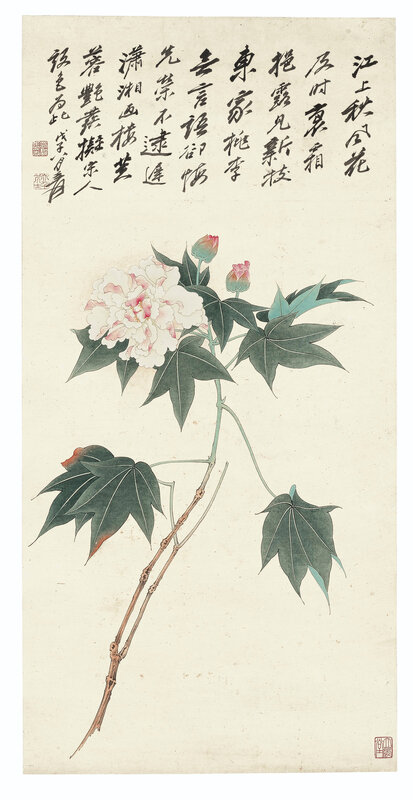











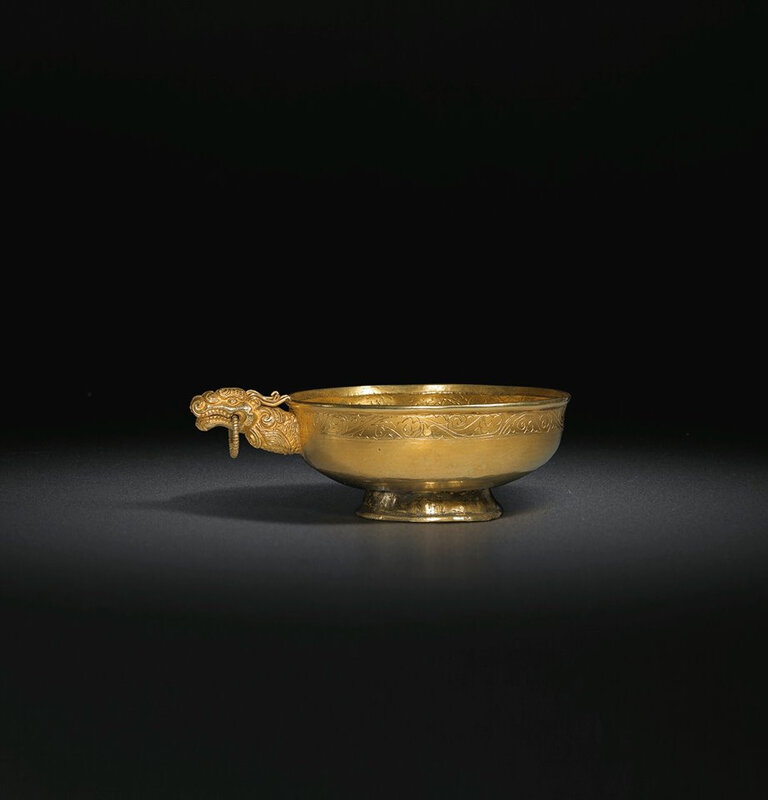

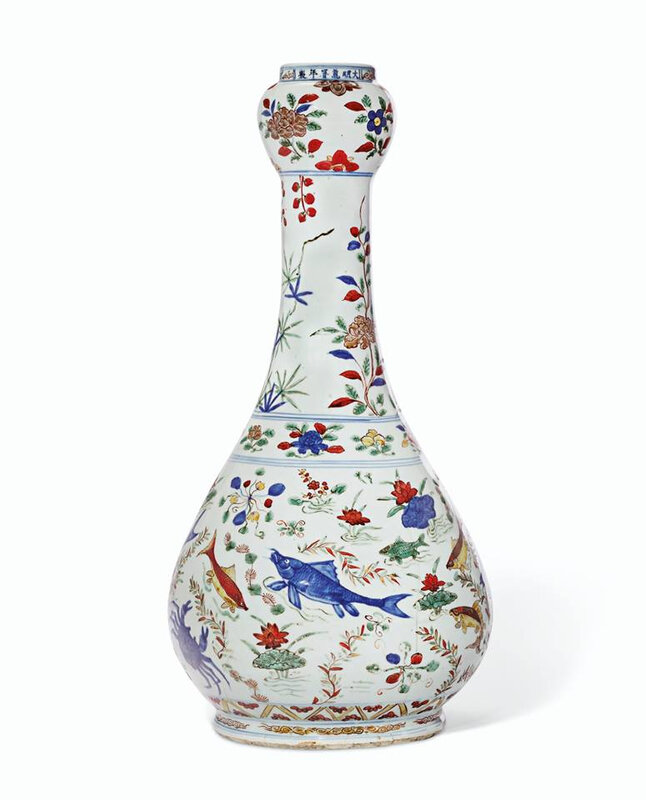


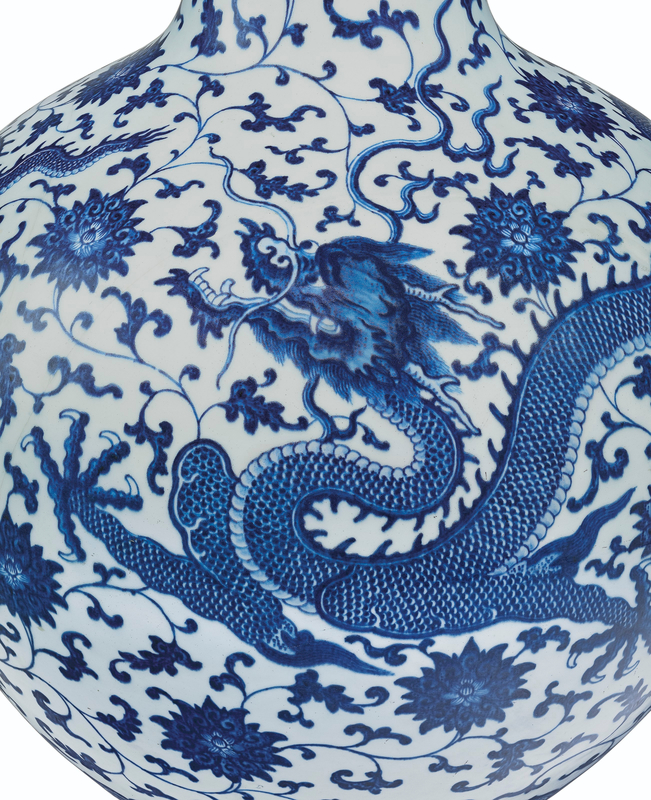
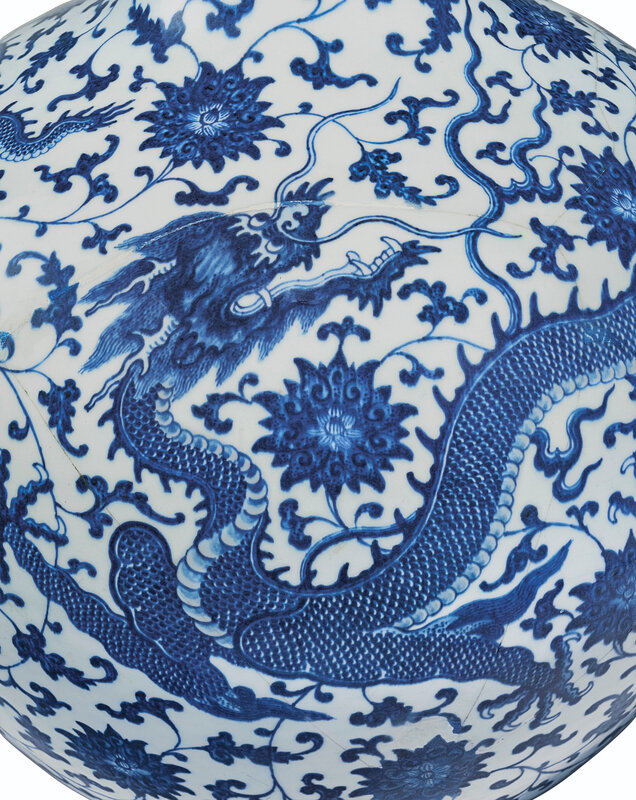
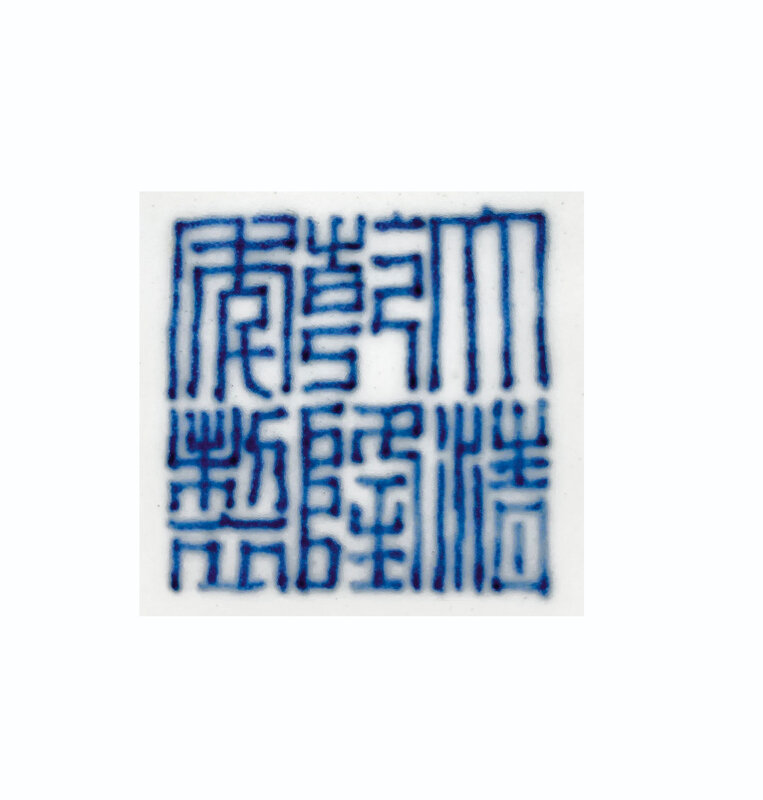

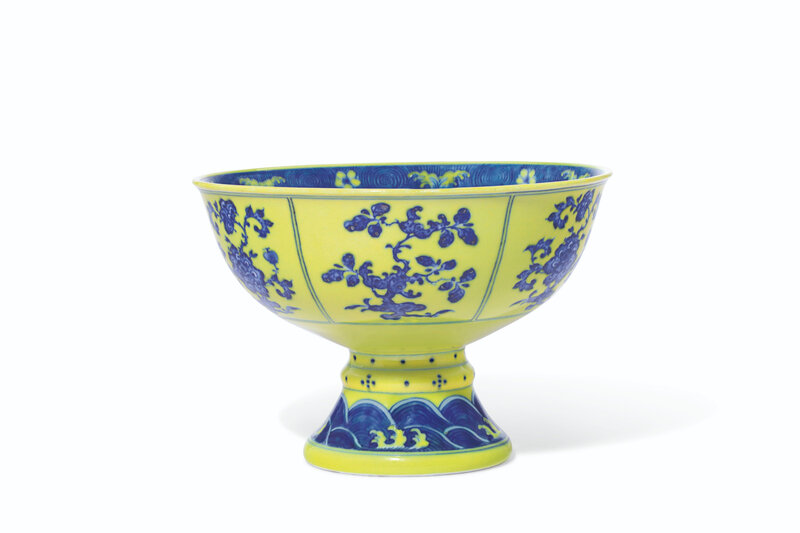


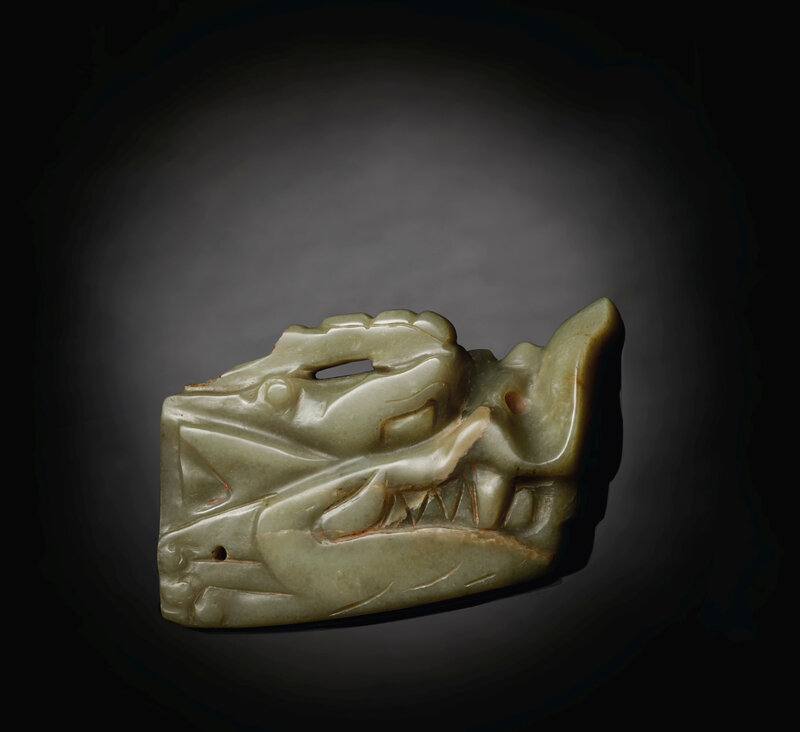





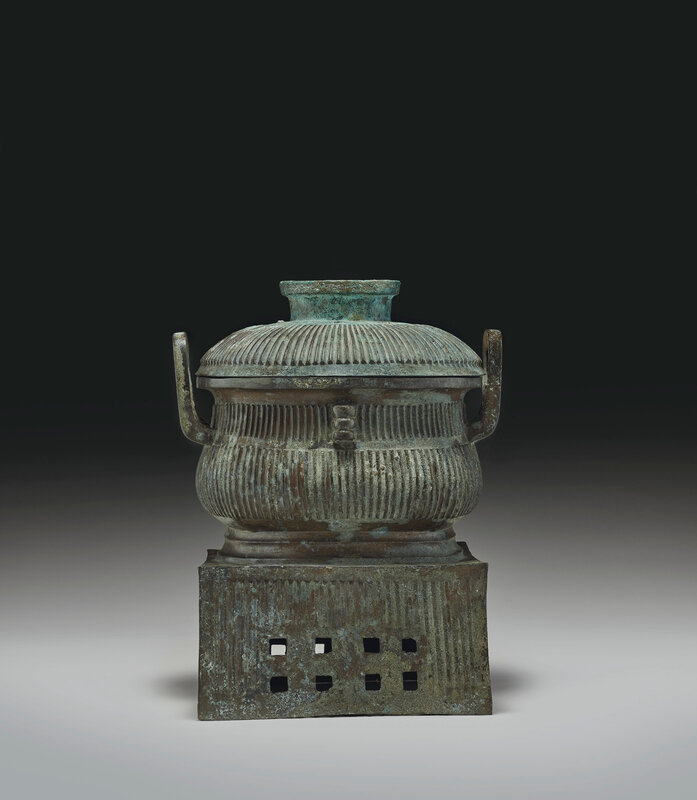
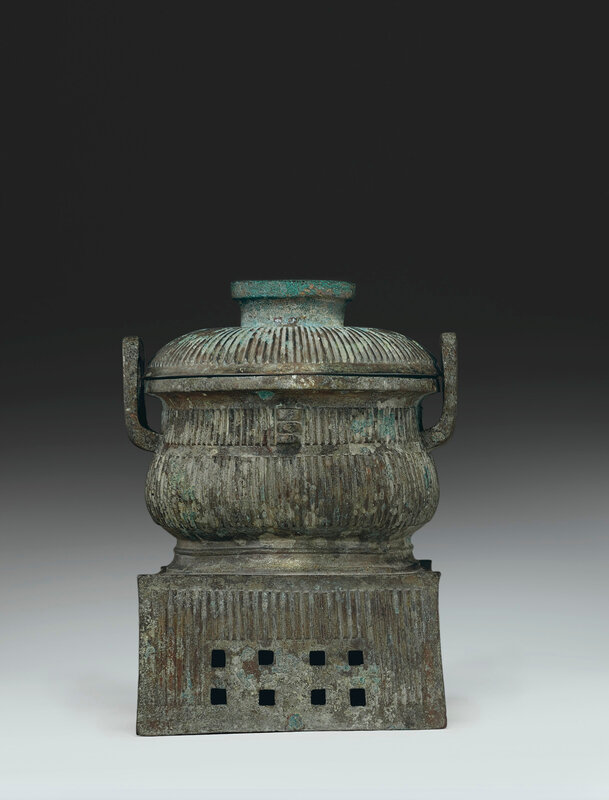
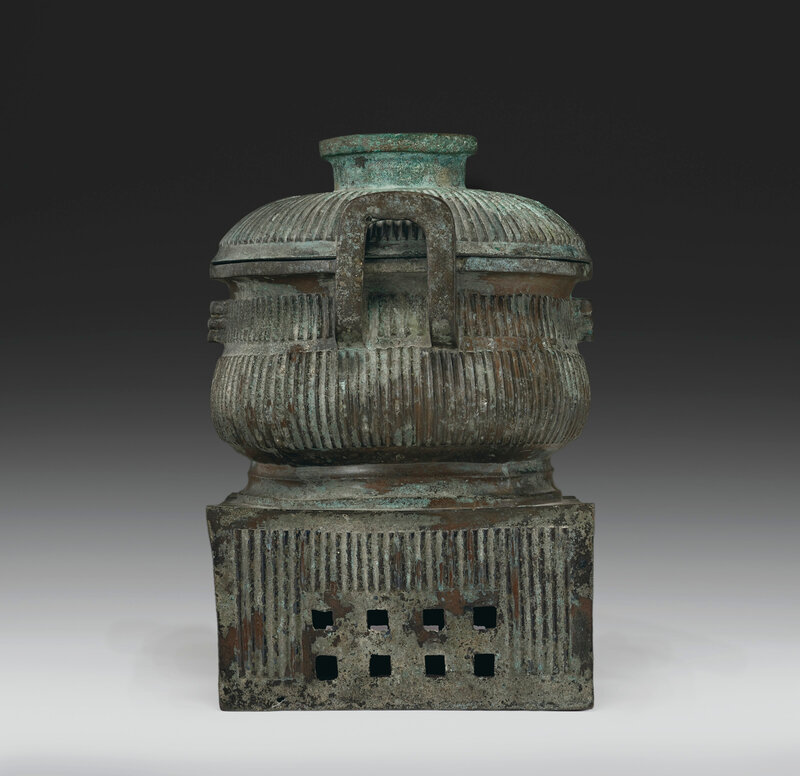


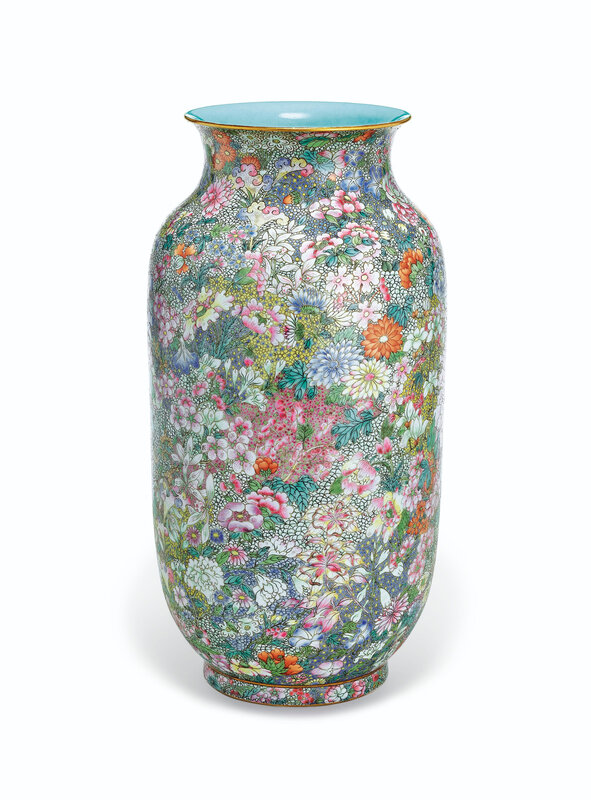
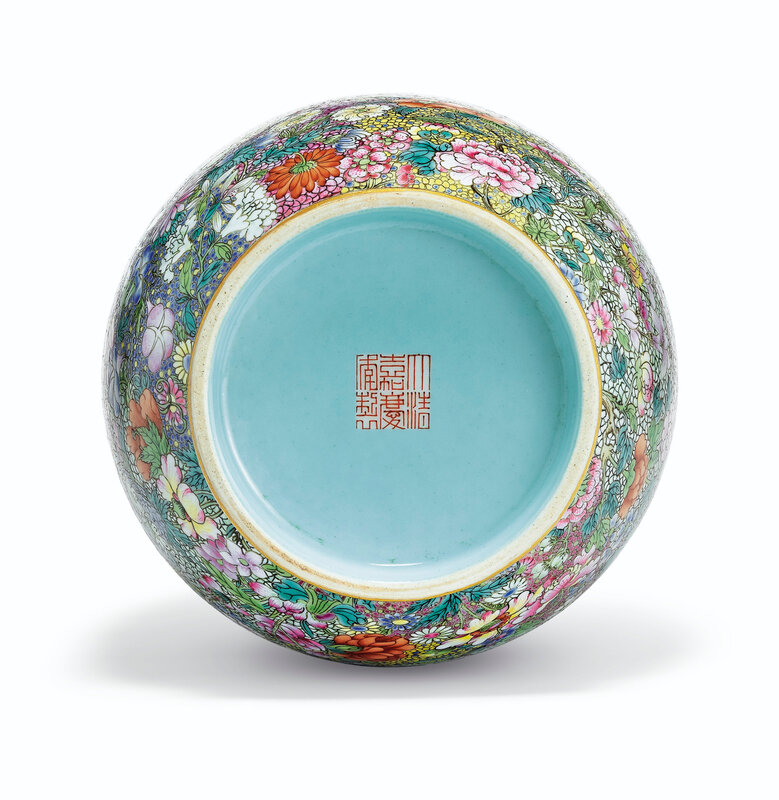
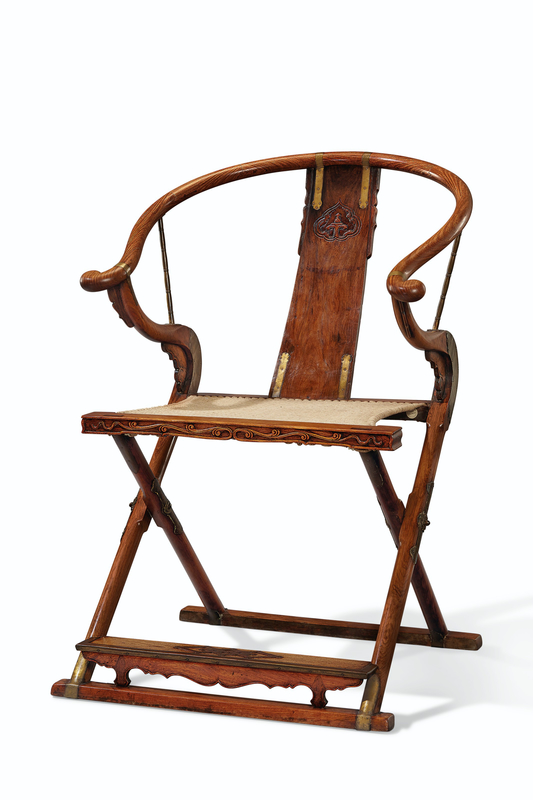


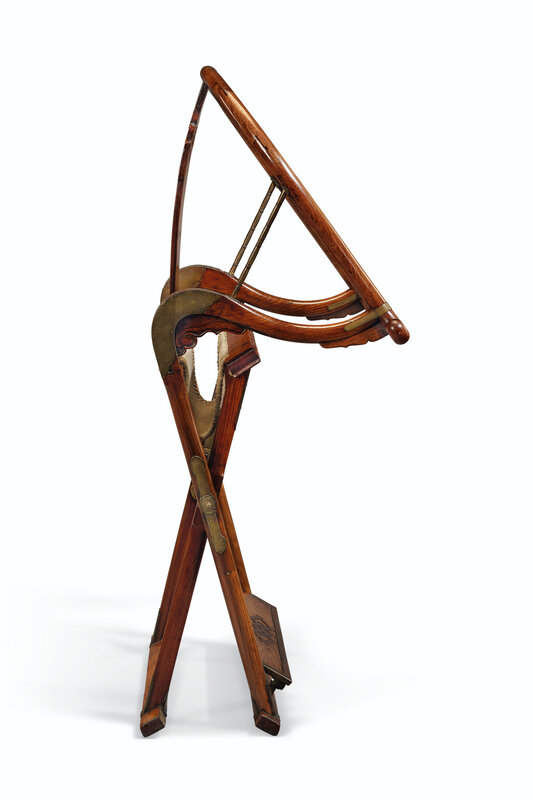
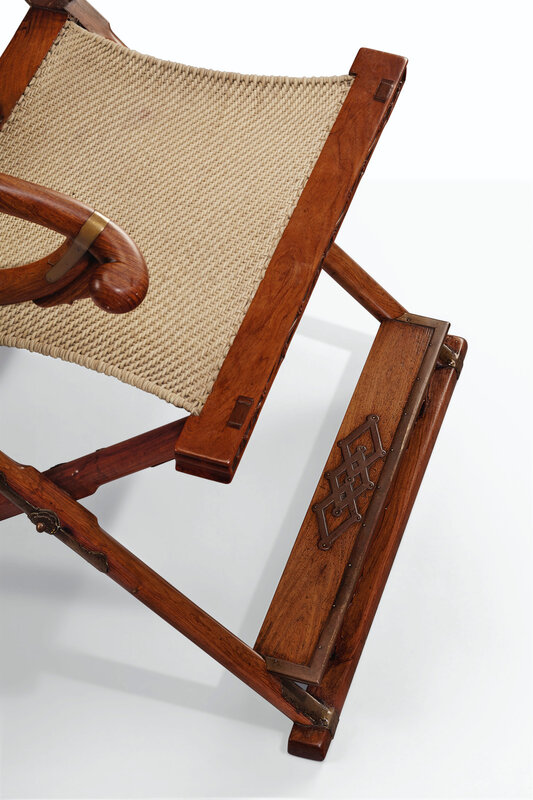

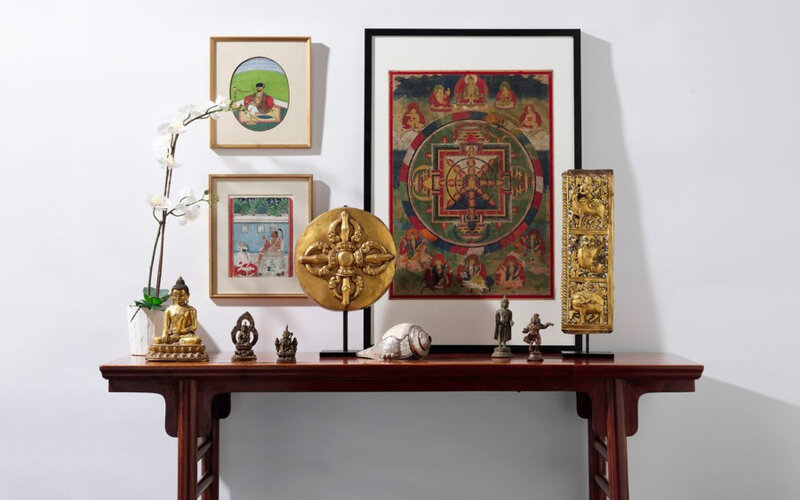



/http%3A%2F%2Fstorage.canalblog.com%2F91%2F48%2F119589%2F128923043_o.jpg)
/http%3A%2F%2Fstorage.canalblog.com%2F84%2F09%2F119589%2F128922928_o.jpg)
/http%3A%2F%2Fstorage.canalblog.com%2F74%2F57%2F119589%2F128709421_o.jpg)
/http%3A%2F%2Fstorage.canalblog.com%2F96%2F72%2F119589%2F128683141_o.jpg)